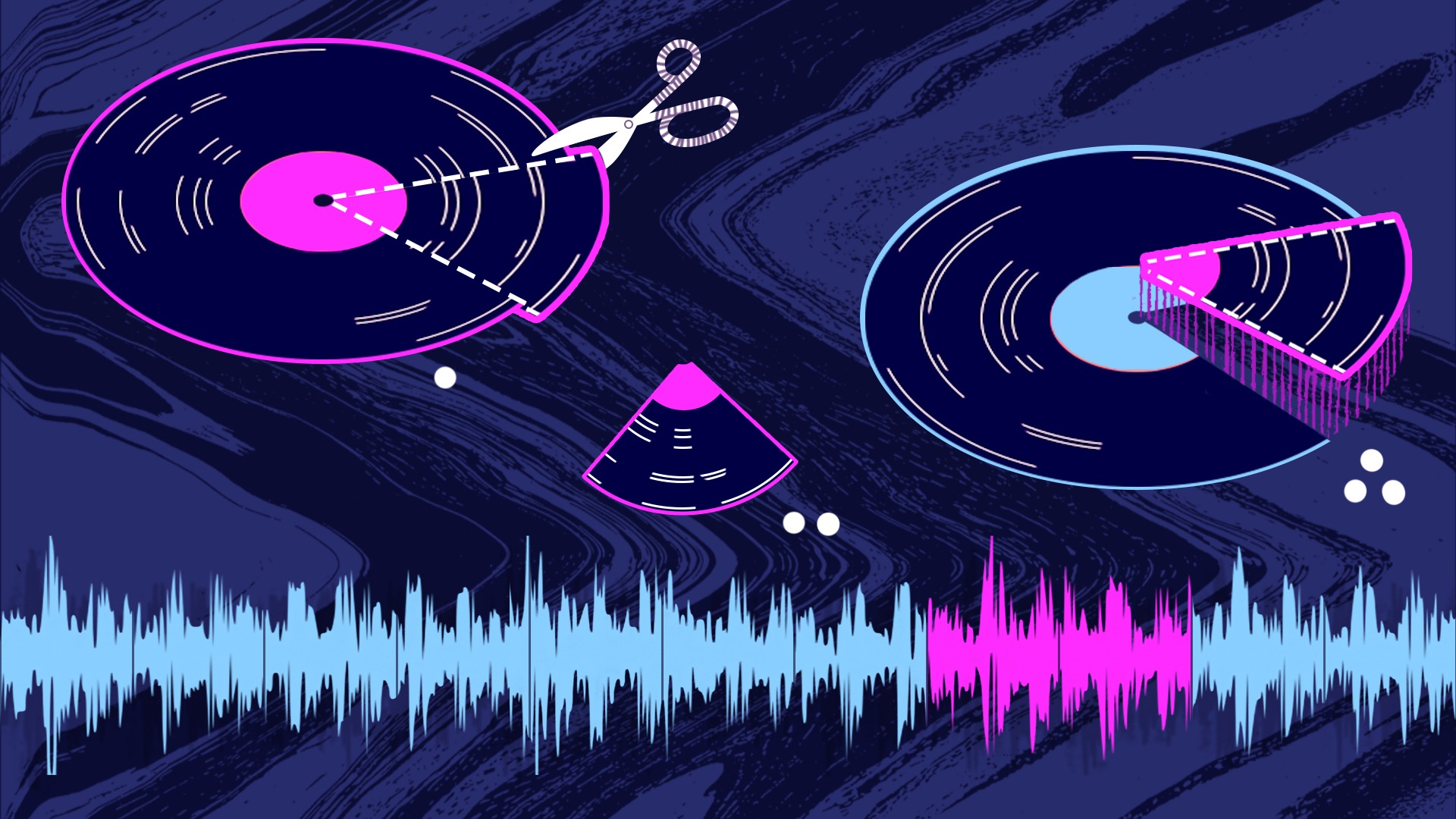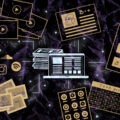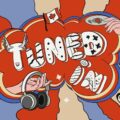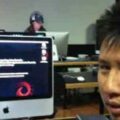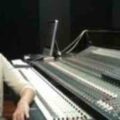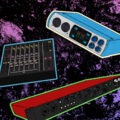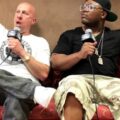In part 1 of The Evolution of Plagiarism in Music, we took a look at historic cases of sonic copycats, before the industry had even caught up and set clear copyright laws. Though the early days seemed messy enough, when sampling came into the mix in the ’80s and ’90s, it opened a whole new musical Pandora’s box.
While sampling can trace its roots back to the 1960s with dub reggae, and earlier still to musique concrète in the 1940s, it didn’t reach the mainstream until the emergence of hip hop in the ’80s. These days, clearing samples (getting permission to use music/a song from the copyright owner) is a complex and often expensive process, but back then it was revolutionary, and necessary. Much of modern music wouldn’t exist without sampling, which gave the working class access into the music scene. It allowed early MCs to buy affordable equipment, rap over drum loops, and create an entirely new style of music.
While many artists saw sampling as a repurposing of snippets to meld into something new, the original writers often saw it as plagiarism, and copyright law was essentially caught with its pants down. It’s a tricky middle ground where the people sampling never claimed to have written the material, but didn’t feel like they stole it either. Of course, whenever an artist’s music pops up on someone else’s record, an argument is likely to ensue.
Simply because there was so much mystery around sampling when it first became popular (record executives didn’t seem to understand it at all), some myths did arise. Namely, that if you only sampled two seconds of track, then it was “fair use”. Unfortunately, this isn’t true. If you sample any amount of someone else’s music, they have the right to sue.
Upon being sued, artists could defend themselves on the grounds of fair use, but with sampling, that would be very hard to prove. Under the fair use rule, sampling must be for the purpose of research, scholarship, criticism, comment, teaching, or news reporting. It’s certainly possible to argue that your sample falls into these categories, but the courts will generally disagree. Basically, sampling without securing the rights is ill-advised. But that doesn’t mean some pioneers didn’t give it a shot when no one was looking too hard.
In 1989, Public Enemy released “Fight the Power”. For many, it’s synonymous with the opening credits of Spike Lee’s film Do the Right Thing, and for others it was a much-needed rally cry. It’s also got a whopping 22 samples strewn throughout its structure.
The way Public Enemy utilized these samples goes beyond mere sonics: they’re full of cultural references. James Brown is up there as one of the most sampled artists of all time, and his iconic “Uh!” is damn near ubiquitous. It pops up in “Fight the Power” a number of times, but what’s of note is that it’s from the song “Say It Loud – I’m Black and I’m Proud”. Similarly, you might notice a short sample of a group saying “I” on the Public Enemy track. It’s one of those ‘once you hear it, you can’t unhear it’ situations. That’s from the Bob Marley and the Wailers track “I Shot the Sheriff”.
It’s a lot more noticeable towards the end of “Fight the Power”, as it’s repeated a few times. What’s not immediately obvious, however, is the fact that by using specific samples like these, Public Enemy are alluding to other black artists before them, who had a similar message of Black empowerment. The samples don’t just sound perfect for the burgeoning style of hip hop at the time – they’re clever and meaningful too. In a case like this, sampling wasn’t lacking inventiveness, it was just a misunderstood new form of creativity.
De La Soul was also hailed as unimaginative after being sued by The Turtles in 1991. One of the band’s members, Howard Kaylan, told The Los Angeles Times, “Sampling is just a longer term for theft. Anybody who can honestly say sampling is some sort of creativity has never done anything creative”.
The track in question was just a skit on De La Soul’s debut record 3 Feet High and Rising. It’s only around one minute in length, featuring a 12-second clip of The Turtles’ 1969 song “You Showed Me”. The case against De La Soul was settled out of court, with Turtles members Kaylan and Mark Volman reportedly getting $1.7 million – although De La Soul claim they never paid that much.
What makes this case noteworthy is not only the irony of it all (“You Showed Me” was actually written by Roger McGuinn and Gene Clark of The Byrds), but it marked a shift in sampling’s trajectory. The belief at the time was that the ruling set a precedent that would eventually ruin hip hop, burying the genre’s artists in legal fees that they could never afford.
Despite a steady decline in sampling after that case, the technique never disappeared entirely. White label records (which are often completely blank vinyls with only a plain white label displayed) became widespread. While white labels can sometimes feature artist and label info, they can also be totally anonymous. Due to being uncredited, these records are near-impossible to track, making legal action incredibly difficult.
While the widespread use of sampling was integral to the birth of hip hop, this one sample, The Amen Break, spawned entire musical genres all on its own. That small segment of “Amen Brother” was essential to the formation of jungle in ’90s. If it weren’t for jungle, there would be no drum and bass, and without drum and bass, styles like grime, footwork, and dubstep might not exist either. Pretty quickly, the scope of The Amen Break’s influence become apparent.
So, where do The Winstons stand on all of this? As previously mentioned, you can’t copyright a drum beat (just ask Dave Grohl, who recently admitted to ripping off the drums from various disco bands), but this isn’t technically a drum beat, it’s a sample of a record. This means it’s protected under copyright law. Unfortunately for The Winstons, they never received any royalties, due to the statute of limitations on copyright infringement in the U.S. being just three years, meaning the cases needed to be filed within 36 months of the song being sampled. By the time anyone even noticed what was happening, most of the damage was done.
The Winstons’ singer Richard Lewis Spencer would never have even known about The Amen Break and its prolificness if not for a UK record company contacting him in 1996 to obtain the song’s master tapes. During a 2011 BBC radio documentary, Spencer vented his anger about the sample, “I felt invaded upon, like my privacy had been taken for granted”, he said. “The young man who played that drumbeat, Gregory Coleman, died homeless and broke in Atlanta, Georgia”.
Thankfully, this story does have a somewhat happy ending. In 2015, British DJs Steve Theobald and Martyn Webster set up a crowdfunding page to raise money for Spencer. Despite a goal of only £1000, they managed to raise £24000 ($40880 CAD). The figure pales in comparison to what The Winstons are actually owed, but it was certainly a kind gesture from the fans of the genres they helped create and from the producers who used their infamous drum loop.
Whether or not you think sampling to be immoral, its widespread influence is undeniable. Hip hop, jungle, and the various sub-genres that followed them would be nowhere without the use of sampling. When you consider the untold amounts of innovation that have happened within those styles of music, the argument that sampling is uncreative doesn’t hold much water.
Next up, we’ll explore messy contemporary examples of alleged musical theft that go beyond melody or lyrics. The final part of our series Blurred Lines: The Evolution of Plagiarism in Music Part 3 begs the question: can the “vibe” of a song be copied?
Text written by Daryl Keating
Illustration by Yihong Guo
